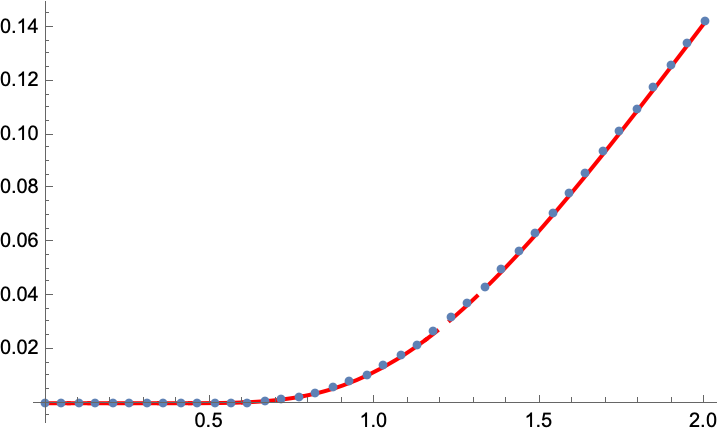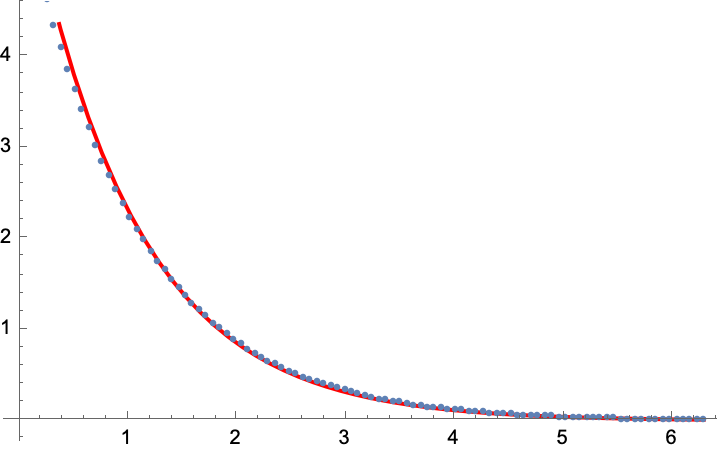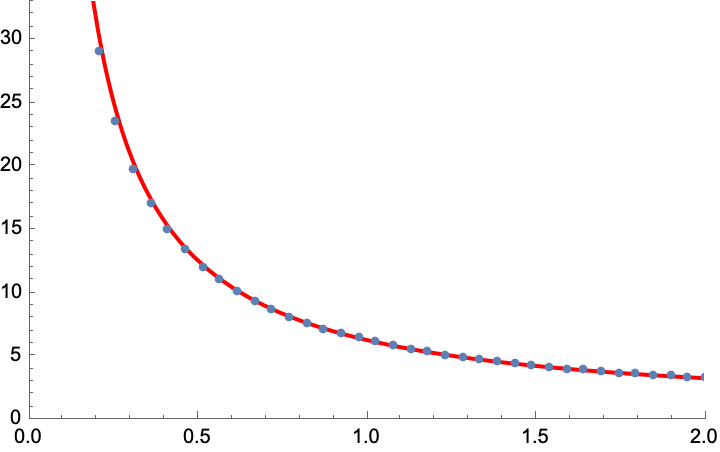Fourier transformation of the Toeplitz matrix elements in the infinite-matrix limit gives $$w(\theta)=\sum_{m=-\infty}^\infty \frac{e^{im\theta}}{1+im\epsilon}=\frac{i}{\epsilon} \left[e^{-i \theta} \Phi \left(e^{-i \theta},1,\frac{\epsilon+i}{\epsilon}\right)-\Phi \left(e^{i \theta},1,-\frac{i}{\epsilon}\right)\right],$$ with $\Phi$ the Hurwitz-Lerch transcendent. The Fourier transformed matrix is diagonal, so the estimate for the eigenvalues of $G$ for $n\gg 1$ is $$\lambda_k=w(2\pi k/n),\;\; k=1,2,\ldots n.$$
This is a monotonically decreasing function of $k$. The smallest eigenvalue is reached for $k=n$, $$\lambda_{\rm min}=w(2\pi)=\frac{i}{\epsilon} \left[ \Phi \left(1,1,\frac{\epsilon+i}{\epsilon}\right)-\Phi \left(1,1,-\frac{i}{\epsilon}\right)\right].$$
A numerical check, for $n=100$, shows this is quite accurate:

Red curve is $w(2\pi)$ as a function of $\epsilon$, the blue dots are the smallest eigenvalue of the $100\times 100$ Toeplitz matrix.
Above I compared the smallest eigenvalue, the full set of eigenvalues also agrees nicely with $w(2\pi k/n)$. Here is a comparison for $\epsilon=1$ and $n=100$.

Red curve: $w(\theta)$ for $\epsilon=1$; blue data points: $\lambda_k$ as a function of $2\pi k/n$ for $n=100$.
For the $\epsilon$-dependence of the largest eigenvalue $\lambda_{\rm max}$ I find $$\lim_{n\rightarrow\infty} \lambda_{\rm max}=\lim_{\theta\downarrow 0}w(\theta)=\frac{\pi}{\epsilon} \left(\coth \left(\frac{\pi }{\epsilon}\right)+1\right).$$ Here is a comparison of $w(0)$ with $\lambda_{\rm max}$ for $n=500$:

